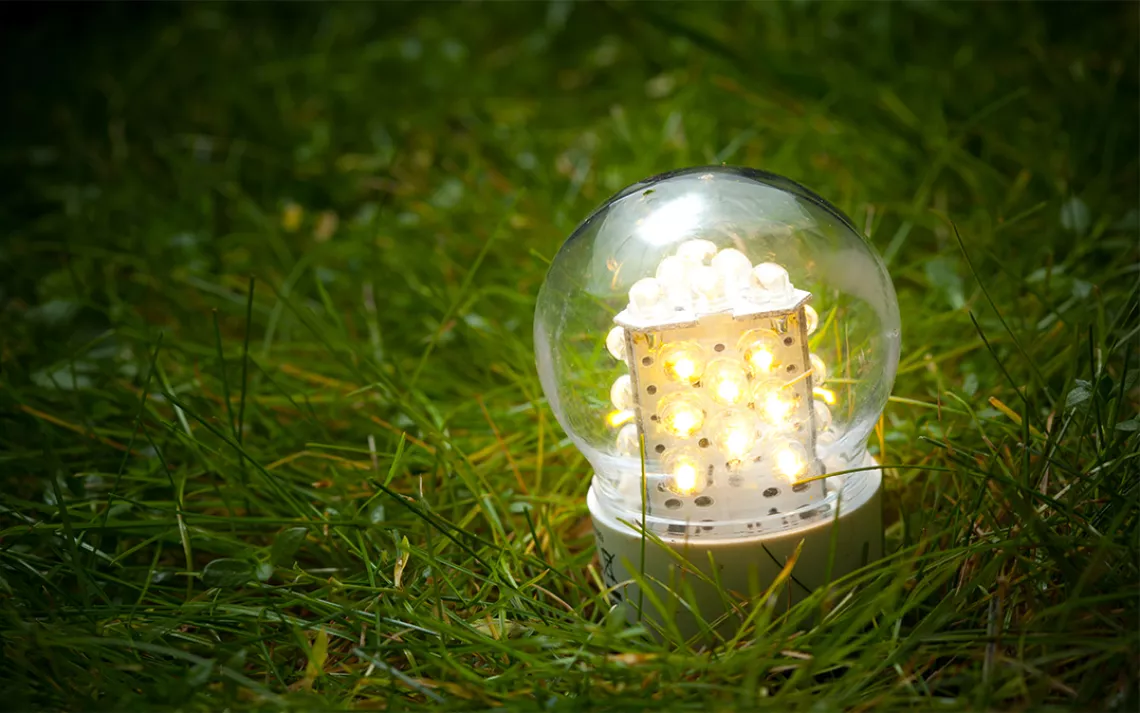Is It Better to Use Up Old Incandescent Bulbs, or Should I Recycle Them for LED's Instead?
Mr. Green lights up the answer.

Photograph courtesy of iStockphoto/nikkytok.
Q: LED bulbs use less electricity than incandescent bulbs, so I bought a bunch for my home. But now I have a few boxes of incandescents sitting in my closet. Does it make sense to use them because they've already been manufactured? Or should I recycle or landfill them?
—Rich in Berlin, Massachusetts
Those old bulbs are not worth the electricity they'll use, so dump 'em. Unlike compact fluorescent (CFL) bulbs, they don't contain hazardous materials. The bulb materials are so low in value that recycling doesn't help.
One 60-watt incandescent bulb, in a typical 1,000-hour life span, would be responsible for emitting more than 40 pounds of carbon dioxide in Massachusetts, the EPA says. And one would emit as much as 90 pounds in places that rely more heavily on coal to generate electricity. (If all power for the incandescent's life was generated by coal, that bulb would be guilty of 130 pounds.) An LED producing about the same amount of light emits only a fourth as much CO2 and would be responsible for just 10 pounds in your town.
Cost-wise, incandescents burn out before you turn 'em on. With Massachusetts's electricity rates averaging almost 18 cents per kWh, the cost of keeping one lit for its lifetime is close to $11. The LED costs only $1.79 to operate. With the national average price of electricity now almost 13 cents a kWh, it's a lot wherever you live.

Make every day an Earth Day
Get articles like this one sent directly to your inbox.
With this action you affirm you want to receive Sierra Club communications and may vote on policy designated by the Sierra Club Board.
The newest incandescents (yes, they are still available) consume less power than the old ones, but they still lose big. And the newest LEDs require only half as much power as their predecessors. To find the most efficient bulb for any given application, visit the EPA's Energy Star website, EnergyStar.gov.
—Bob Schildgen
 The Magazine of The Sierra Club
The Magazine of The Sierra Club